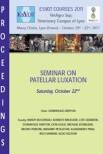Intramedullary nails are specialized metal rods inserted into the medullary cavity of a fractured bone and secured to reduce load on the fracture site, provide stability, and permit healing. The purpose of this review is to highlight the biomechanics of orthopaedic intramedullary nailing, as well as discuss the biomechanical considerations that have shaped implant design and fixation technique in veterinary and human medicine. Relevant studies were included from the PubMed database and Google Scholar for discussion on the basic science and nail design of intramedullary nails. Implant design and implementation continues to progress, with new innovative designs currently under investigation. A lack of consensus remains on the superior implant material. Recent studies, particularly in human populations, have supported the use of reaming based on reoperation rates, nonunion rates, and dynamization. Design modifications, such as the expandable intramedullary nails and angle-stable interlocking designs, have been investigated as methods of improving cortical contact and resisting torsional stress. Intramedullary nailing is a valuable stabilization technique for long bone fractures across a variety of species. The technology continues to undergo design improvements in both veterinary and human medicine.
Biomechanical Principles of Intramedullary Nails in Veterinary and Human Medicine
Journal
Vet Comp Orthop Traumatol. 2024 Jul 9. doi: 10.1055/s-0044-1788316.









